Chinese Calligraphy: A Reflection of Traditional Wisdom
The exhibition Revisiting Ancient Chinese Painting and Calligraphy organised by the Groningen Confucius Institute in The Hague in 2018 has elicited great interest and attention among the Dutch public for Chinese Painting, Chinese Calligraphy and Chinese Porcelain Carving. It not only displayed Chinese art in diverse forms, but also created a dialogue between East and West, thus deepening mutual understanding of each other’s culture.
We believe that it is valuable to share the collection of works with our readers, for you can capture the beauty and charm of the artistic creations and draw inspiration from the unfading wisdom of ancient Chinese philosophers.
- Chinese Calligraphy: A Reflection of Traditional Wisdom
- Chinese Painting: A Glimpse of Ancient Life
- Chinese Porcelain Carving: A Recreation of Calligraphic Art
Collection of Chinese Calligraphy Works
The contemporary calligraphy works below created by reputed Chinese calligrapher Zhang Qieyi present the artistic integration of poetry, calligraphy, painting and seal cutting, reflecting cultural literacy, mode of thinking, aesthetics and philosophical concepts of Chinese people.
Calligrapher
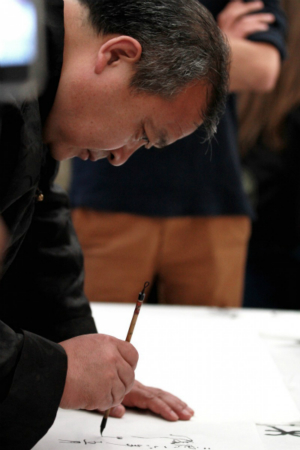
Zhang Qieyi(1968 -) is a native of Weishan County, Shandong Province, and the most reputed calligrapher of Mega Character in China. He was born into a family of calligraphers and painters and has received in depth instruction from renowned calligraphers of both Southern and Northern Schools of Chinese calligraphy. He is devoted to the comprehensive artistic presentation of poetry, calligraphy, paintings, seals, and the refinement of traditional Chinese cultural values. Zhang Qieyi’s highly valuable calligraphy works are a composite of both aesthetic and philosophical dimensions and have been exhibited in, among other places, Croatia, Japan, and South Korea.
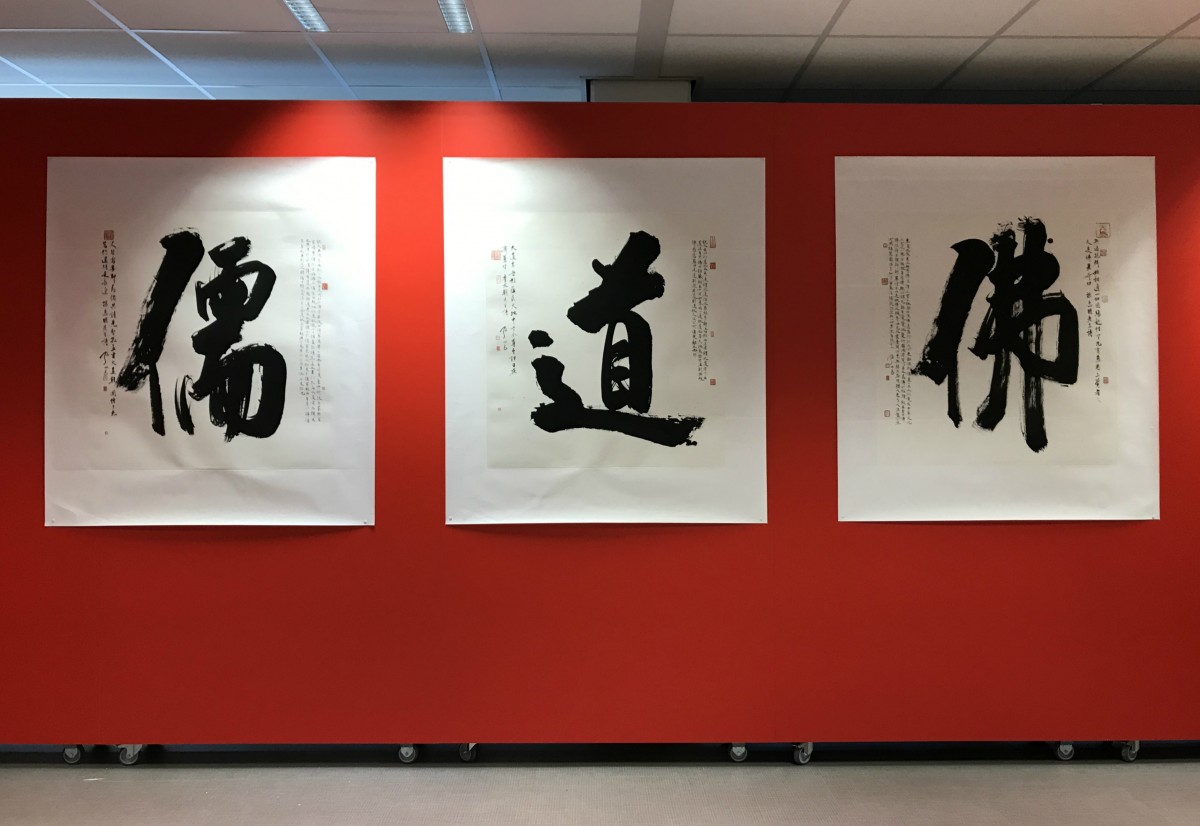
- Confucianism, Zhang Qieyi. Mega characters, 132cm × 116cm
- Daoism, Zhang Qieyi. Mega characters, 132cm × 116cm
- Buddhism, Zhang Qieyi. Mega characters, 132cm × 116cm
At the heart of traditional Chinese culture are the three interwoven belief systems, Confucianism, Daoism, and Buddhism, each different yet complementing one another. The Emperor Xiaozong of Song suggested using “Buddhism for the mind, Taoism for the body, and Confucianism for organising society” to summarise the main features of the three cultural teachings as a harmonious aggregate. These three philosophical concepts underline highly valued virtues in traditional Chinese culture: “harmony is most precious” and “harmony in diversity” as a token of tolerance and open-mindedness.
Nederlands: Confucianisme, taoïsme, boeddhisme
中文:儒道佛
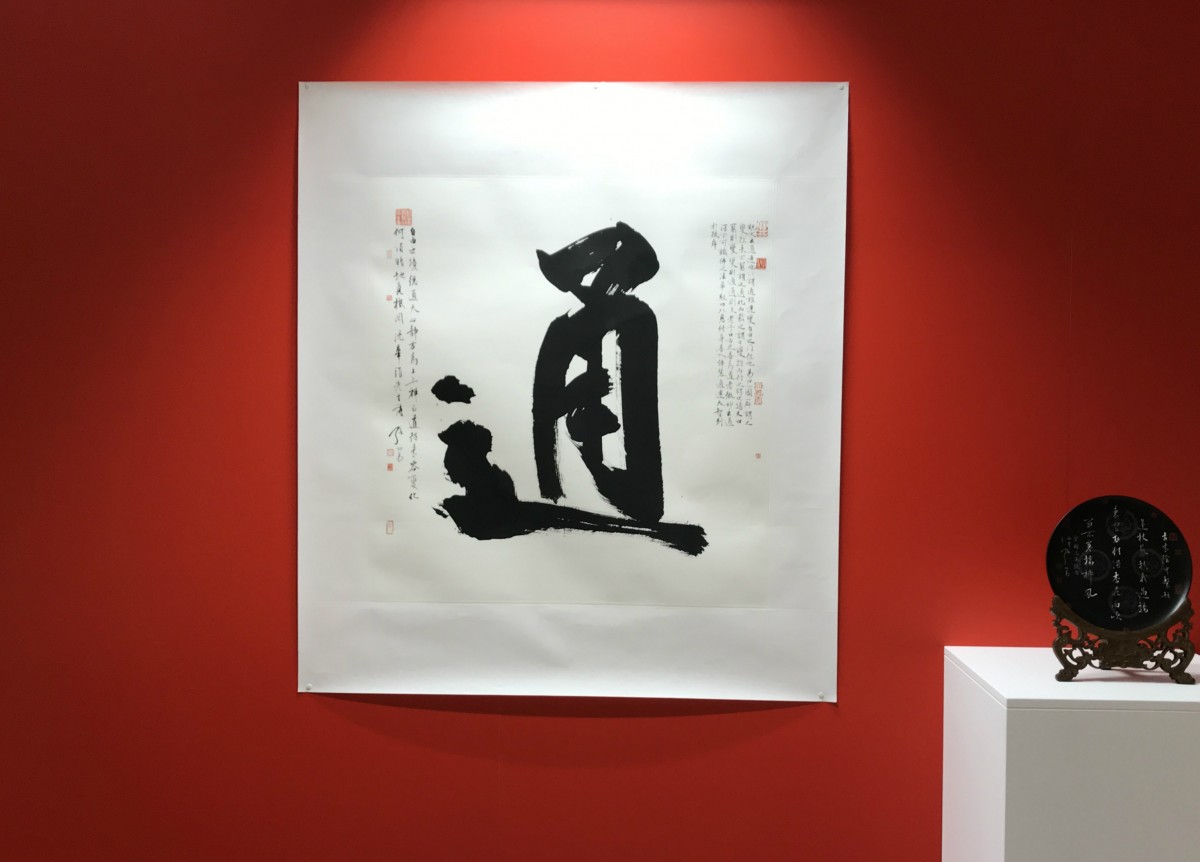
- Tong, Zhang Qieyi. Mega characters, 132cm × 116cm
“Tong” originally means “accessible, barrierless”, but the word carries an extended sense in Chinese culture: “uninterrupted interconnectivity”, as well as “understanding, appreciation”. The spirit of “Tong” has guided Chinese people’s ideals, personal aspirations and academic pursuits, in seeking wisdom in tolerance and reasonableness, and respecting the broad and profound knowledge of generalists. Also, the spirit of “Tong” permeates the great goal of China’s ‘One Belt One Road Initiative’: policy coordination, facilities connectivity, unimpeded trade, financial integration, and people-to-people bonds between China and the rest of the world.
Nederlands: Tong
中文:通
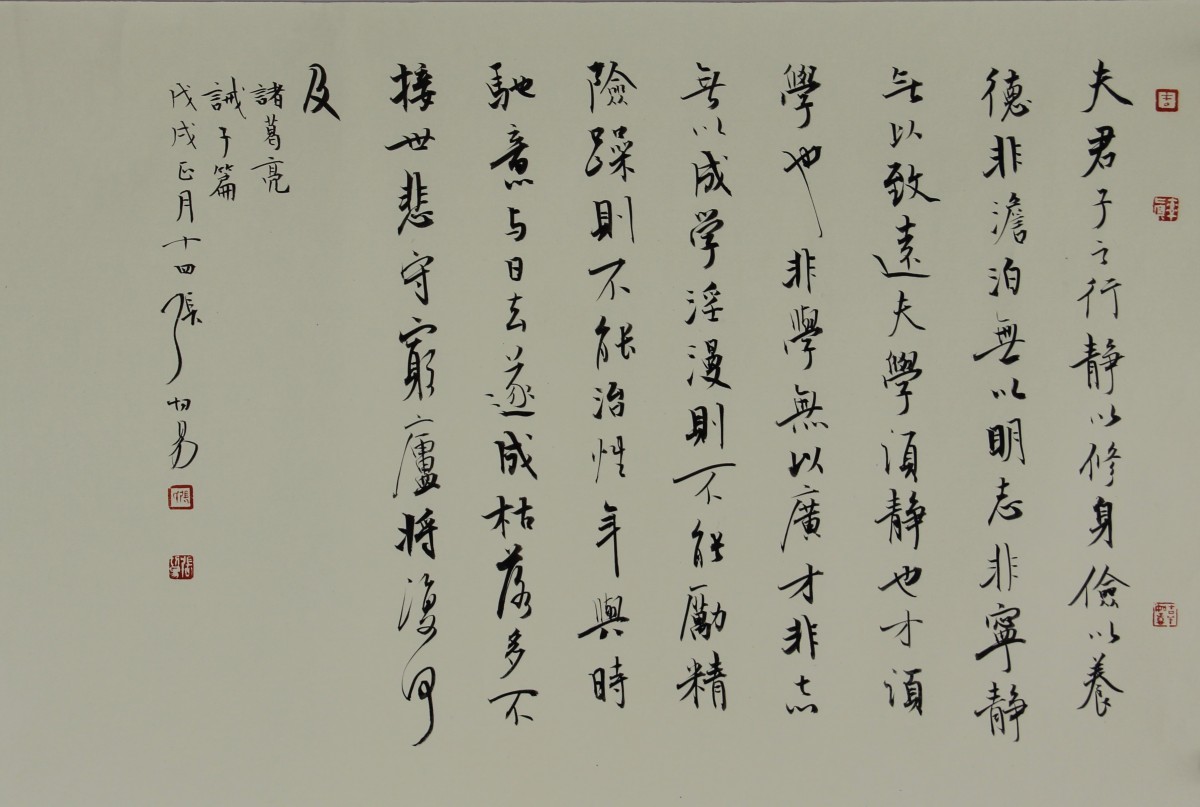
- An Admonition to My Son, Zhuge Liang
Zhang Qieyi, Running script in small characters, 45cm × 65cm
Zhuge Liang wrote the letter in 234 AD before his death, to encourage his 8-year-old son to keep learning, avoid impatience and cultivate strength of will. The two sentences, " Only freedom from vanity can show one’s lofty goal of life; and only peace of mind can help him achieve something really lasting." are widely spread and are still regarded as the philosophy behind disciplined insights on self-cultivation to this day.
Nederlands: Brief aan mijn zoon
中文:诫子篇
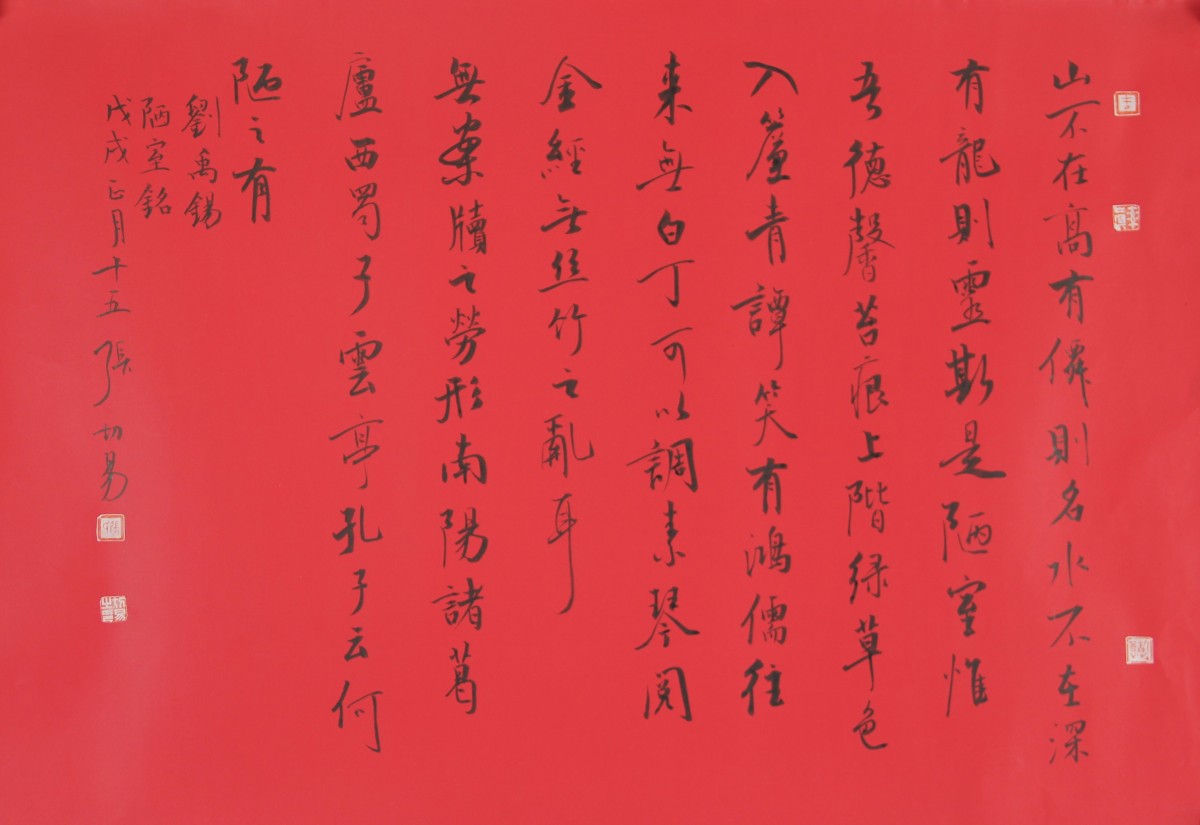
- An Epigraph in Praise of My Humble Home, Liu Yuxi
Zhang Qieyi, Running script in small characters, 45cm × 65cm
This has been a classic for over a thousand years. The author reveals his outlook on life by describing his humble but still worthy and enjoyable way of living: what matters most is not how luxurious one’s house is or how much wealth one possesses, but his deep knowledge and high moral quality.
Nederlands: Mijn bescheiden huis
中文:陋室铭
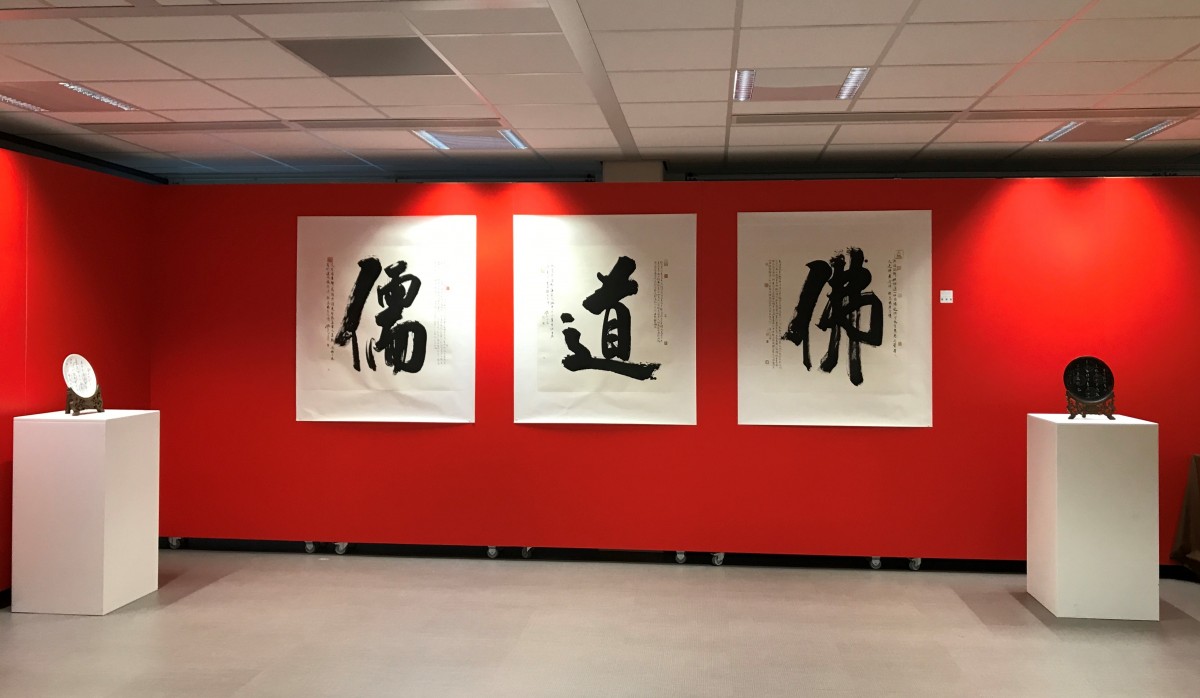
 Share on Facebook
Share on Facebook Share on Twitter
Share on Twitter Share on LinkedIn
Share on LinkedIn